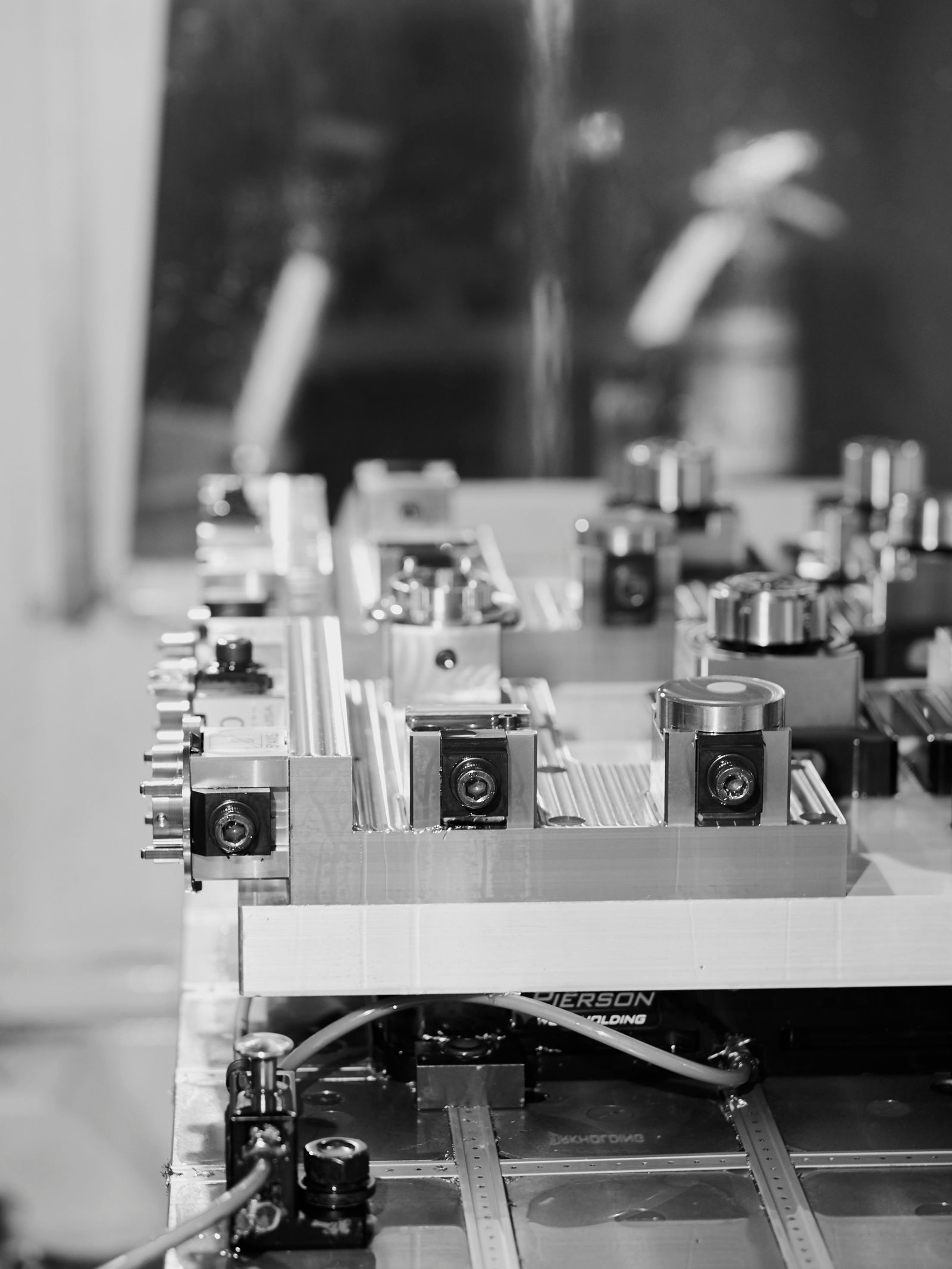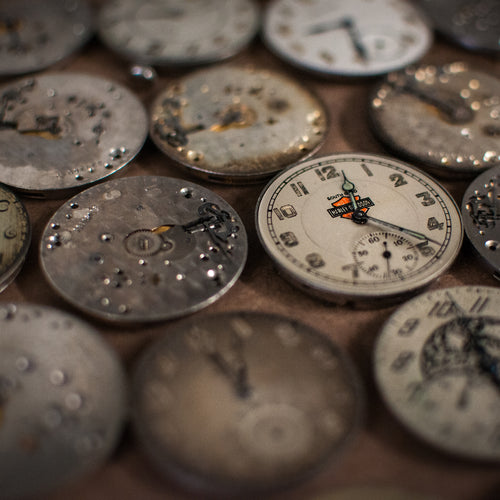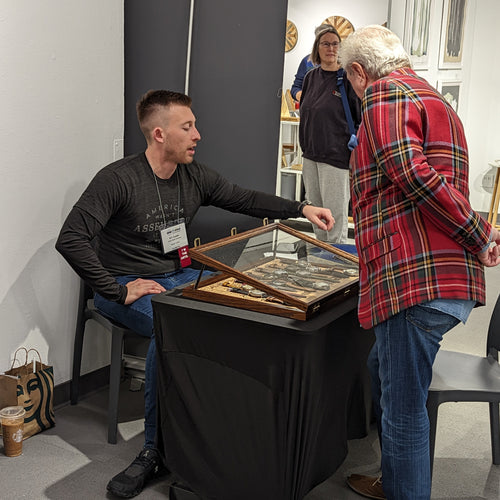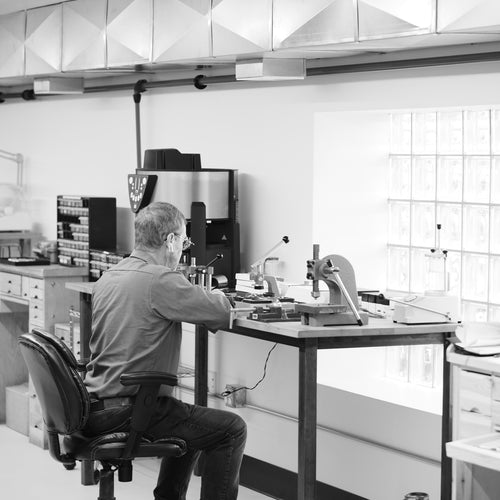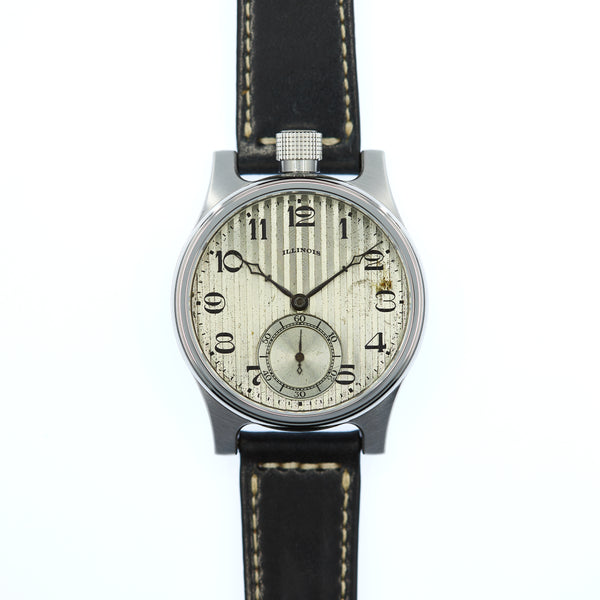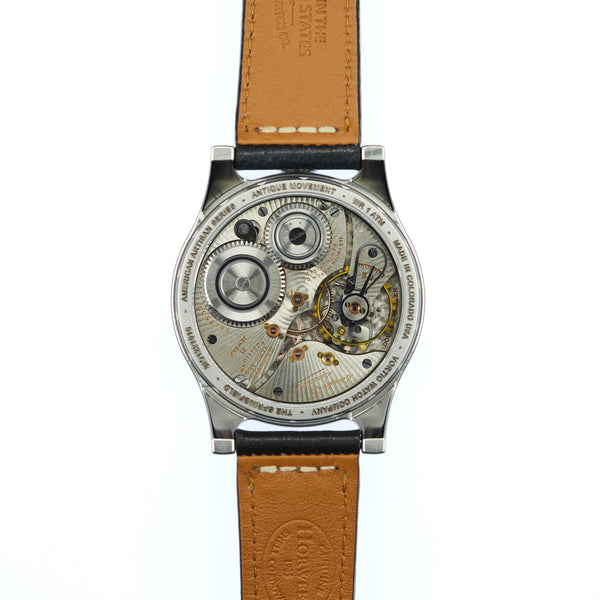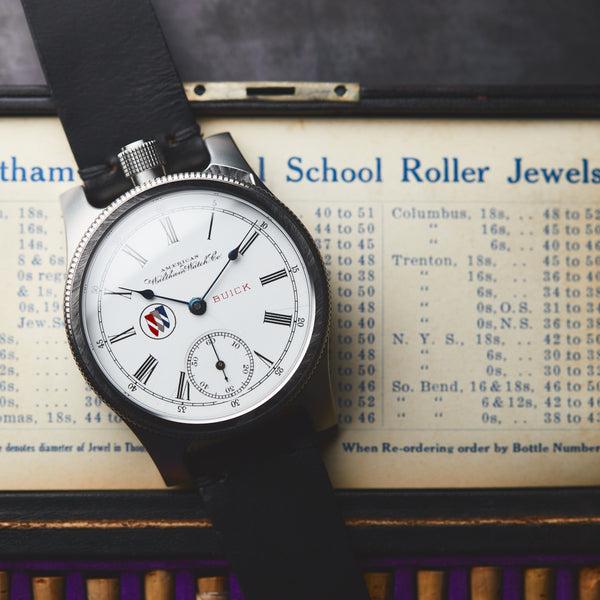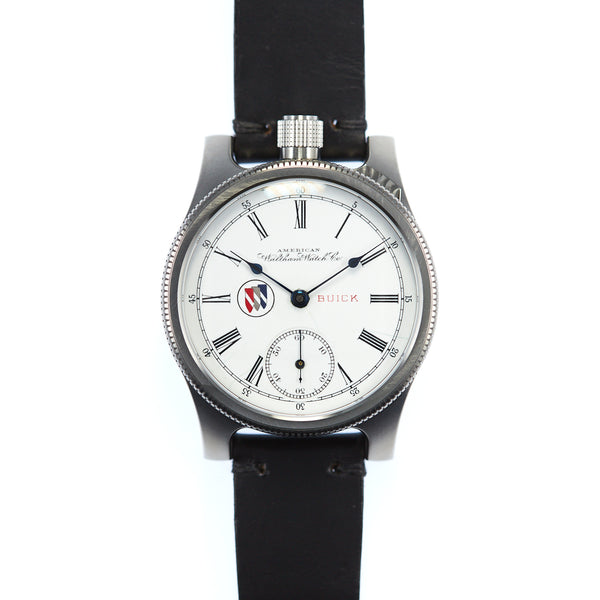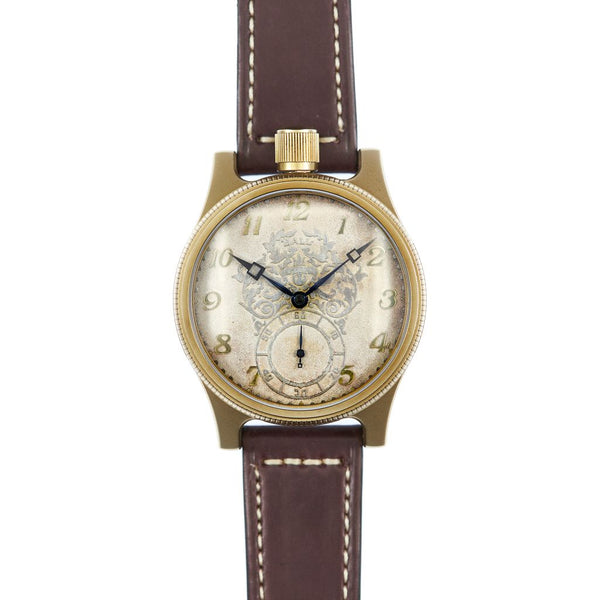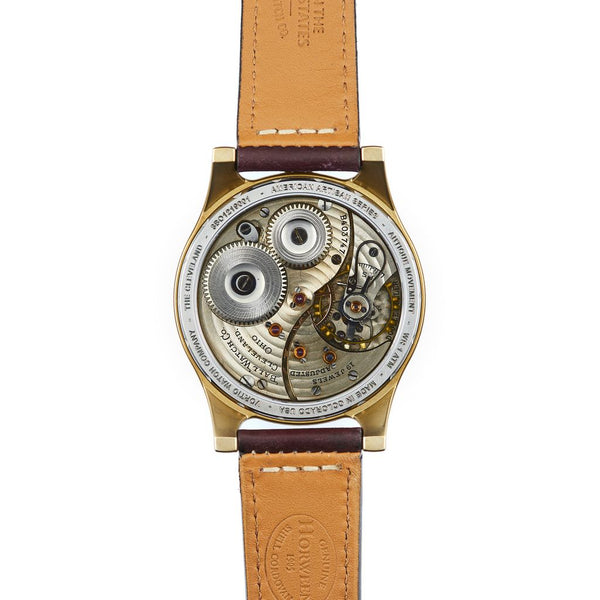Do you know the difference between palletized workholding and zero-point workholding?
If those terms sound like a foreign language to you, don’t worry! There aren’t too many people outside of the machining industry that would know what workholding actually is, so you’re not alone if it’s not a topic you talk about every day.
Let’s start by defining these terms a bit before jumping into today’s article:
- Palletized workholding is used in CNC machining to enable multiple operations to be performed by the machine without the need to set up each operation one at a time.
- Zero-point workholding systems enable users to load and unload these palletized workholders to and from specialized permanent fixtures mounted to the machine.
Both of these approaches streamline and expedite machining processes greatly and ensure greater precision in the machining.
Usually, both R.T. and Tyler would be guiding you through the latest happenings at Vortic Watches, but Tyler’s taking the lead today. Everything we do at Vortic Watch Company — the only American-made watch brand — is centered on our machining processes and that’s Tyler’s wheelhouse. So he’s going to lead us through a deep dive into how our machines work!
We’ve been sharing our story from our transition into our current facility to the things we’ve learned about business and American craftsmanship on Custer & Wolfe: Building a Watch Company through our YouTube channel and article series.
It’s great having you on this journey, and we’re excited to share how palletized and zero-point workholdings have helped us create custom-designed cases for our built in America — not assembled — watches!
What Is a Workholding Pallet?
First things first. A pallet is a quick-change platform in machining that allows a CNC machine to perform multiple operations with one setup.
Instead of having to flip your material from one side to another or adjust it in a vice, the pallet holds the material in a precise position to enable the machine to work around it. You can have pallets set up for multiple operations to reduce the downtime of production that comes from having to set each operation up individually.

“We're not talking about a pallet that you would receive a bunch of boxes on. We're talking about smaller pallets. Each one is a pallet in the machine and palletized workholding as opposed to traditional workholding.” - Tyler Wolfe
With traditional workholding, say you have a vice in the machine, and you would set up the machine to work with that vice. So if you were cutting custom jaws to hold onto a weird shape, you'd have a vice in the machine to hold one part and a chuck in the machine to hold another part.
The traditional way of setting up CNC machines is every time you change parts, you have to set up the machine just to run that part. It takes a long time to set up the part, and once you’re running that part, you need to run a bunch of them at a time to make it worth all of that setup time.
“The idea is that I can take this fixture in and out of the machine without it moving. So if I want to run our case pallet, all I need to do is put it in the machine and I don't need to tell the machine where it is or anything else. It already knows where it is.” - Tyler Wolfe
So now that we have a better understanding of the different types of workholdings we use here at Vortic, let’s get into how we use them!
Quick-Change Pallets Work for Multiple Operations
The palletized workholding systems we use at Vortic offer us great flexibility in our production.
"Instead of worrying about the time spent setting up the machine in relation to production, we are able to quickly change operations and proceed by setting up multiple pallets for different tasks. All we have to do is take one pallet off the machine’s mount and replace it with another.
“Within this large pallet, we have three smaller zero-point workholding systems so we can change these out for different products. Whether it's our 16 size case, our 12 size case, [or] bezels. That's important for Vortic [because] when we're building watches using movements from different companies and different models, we have to change the case [to fit the different sizes].” - Tyler Wolfe

This system allows us to quickly shift between different models of cases without setup time. We can take the pallet out and put the pallet back in. To switch between different watch models, we just switch out the collet. We have all of our programs saved in the machine, and it will run the different things that we need to run without a bunch of setup changes.
Why We Use an Air-Actuated Pallet System at Vortic
So how does the machine hold onto the pallet?
The palletized workholding fixtures we use here at Vortic have two parts. The workholdings have a pallet base, and then they have the pallets themselves. These traditionally have two important features: the locating pins and the mounts that are actually holding the pallet down.
For example, one pallet we use has one round pin and one diamond pin. The round pin is a precision ground pin that will locate the pallet. The diamond pin at the back of the pallet makes sure that the pallet is rotated correctly.
That particular pallet is actuated by air. When we remove the pallet, we have to pull a little valve on the side, and it actually pressurizes a set of spring-loaded balls built into the pin to release the pallet. So when we release that air, those balls spring out to pull the pallet into place, and the pins locate the pallet on the pallet system for our machine to operate around the pallet without having a lot of setup time.
“One reason that it's very important for us to have a consistent way to hold these things is the VM2 [Haas CNC machine is that] the machine is our most important production machine. This machine is running all day, every day and even at night. So we don't want to interrupt this machine to do anything besides making cases.” - Tyler Wolfe
This system allows us to have a pallet set up with collets for the 16-size cases that we can swap between our VM2 and our mini mill. This lets us make the cases on a different machine, so we don't have to interrupt production on the VM2 machine.
Larger Pallets Help Us Make Things Precise
We use a large pallet that we’ve custom-built for making cases, and this pallet has both vices and collets on it.
The pallet starts out as a large, generic aluminum piece, and then we customize it, putting holes, threads, and accurate locating features on it. Then we make a stainless steel riser that we put on top of the pallet so that we can have dovetail vises mounted in a way so that all of our work is being done at a relatively similar height.
Without having our pallets set up at similar heights, we would risk a chance that the spindle of our machine could knock against part of our tooling. So we make sure to raise our workholding so that each of our parts is at a similar height to make sure that we have clearance for everything.

These large risers and pallets offer a significant amount of rigidity to the process, which is extremely important. If we made really thin pallets and risers, they would be able to flex and warp.
Another reason for these larger parts is that we also have our locating features inside of the pallet, and we need thickness to be able to sink screw heads in and get proper thread engagement with all the different fasteners.
“We'd have to change out [an] entire pallet and invest in making one of these entire pallets for each different product that we have. With the new pallets that we have, we can make every single product that we make on either of those pallets because we can interchange them.” - Tyler Wolfe
One of the reasons that the pallets are really useful is dense workholding. We can put a lot of parts in a small amount of space because we can customize the workholding tools just for that part. We created a pallet that we could quickly swap in and out of the machine to do all the other stuff that needs to be done before it makes the watch.
The Flexibility of Palletized Workholding
The other way that palletized workholding is very useful is for quickly switching between jobs that aren't production.
If we need to prototype something or make a tool, putting a vice in the machine and probing everything up takes a lot of time. On the RockLock Bases we have at Vortic, we can quickly swap a vice, a dovetail vice, a collet, a big chuck, or even different custom fixtures we’ve made.
All of these are things we can quickly and accurately swap in and out of a RockLock Base. For example, when we put a vice in the base, we don't have to tell the machine where it is and don't have to question whether or not it's rotationally accurate.
“I don't have to tap it with a hammer to make sure it's perfect. I just put it in, tighten it down and I'm ready to make my part. It is a fixture that we can quickly swap in and out of the machine without needing to set the machine up to rotate it correctly to tell the machine where everything is. Everything's working off the same origin.” - Tyler Wolfe

We don't have to redefine a work coordinate system for each one of our parts because each base holds the parts in the exact same place, which is a game changer. Palletized workholding in its simple form, like we're talking about, is useful to quickly switch between different fixtures in workholding.
Our Workholdings Are Setting Us Up for the Future of Vortic
A lot of what we’re doing with our use of palletized workholdings is with an eye on the future at Vortic.
Our Mori DMU50 CNC machine has the ability to integrate robotics into its operations. Using setups called pallet pools or pallet changing systems that can automatically swap out different parts, we will be able to load different types of workholdings directly into the DMU50.
We’ll have different parts and materials within a cabinet where an arm will come out, swap different parts, and accurately place them in the machine. This setup makes it possible for us to automate the changing out of parts and fixtures on the DMU50 through an automatic door that the machine is already equipped with.
“It doesn't need a human to come in and change parts out and change out pallets because a person can set up 20 plus different pallets, make sure everything's ready to go and the machine will keep swapping them out and keep making different parts.” - Tyler Wolfe
That's the ultimate form of palletized workholding: a robot quickly switching between different parts.
Having a zero-point system allows the machine to locate everything accurately when we switch out pallets. Some people may refer to this as hot swapping or quick-change tooling, but it's all referring to the concept of palletized workholding.
We Love Showing You What We Do at Vortic
We love talking about our production processes and educating you about how we create our watches at Vortic. If you’ve got any questions that we can answer about our workholding setups, or if you want to know more about us and our products, reach out to us! We’d be happy to chat with you about the things that make Vortic great.
And if you’d like to learn more about our incredible watches, stop by our website. We began creating our American Artisan Series in a garage in Colorado, and we’ve grown so much since then. In addition to our original line, we also build Military Edition and Railroad Edition watches, and we can also take your antique pocket watch and repurpose it through our custom conversion process.
Additionally, if you want to stay up to date with everything we’re doing here at Vortic, subscribe to the Custer & Wolfe YouTube channel. We cover a variety of topics here, from showcasing our one-of-a-kind watches to the lessons we’ve learned in building Vortic.

